Bryophytes of Hampshire and the Isle of Wight
South Hampshire (VC11)
John Norton
Hampshire (VC11 & VC12) is a large county with varied geology and soils, but it has a relatively dry climate and only gently undulating topography. South Hampshire (VC11) covers about 196 sq km, with the highest point at Butser Hill on the South Downs at 270m. It has a wide range of typical lowland habitats, including semi-natural woodland, chalk grassland, heathland, acid grassland, saltmarsh and coastal shingle. Some of these are reasonably rich in bryophytes, but the bryoflora is greatly boosted by the New Forest, an extensive area of traditionally managed enclosed and unenclosed woodland, heathland, acid grassland and valley mire.
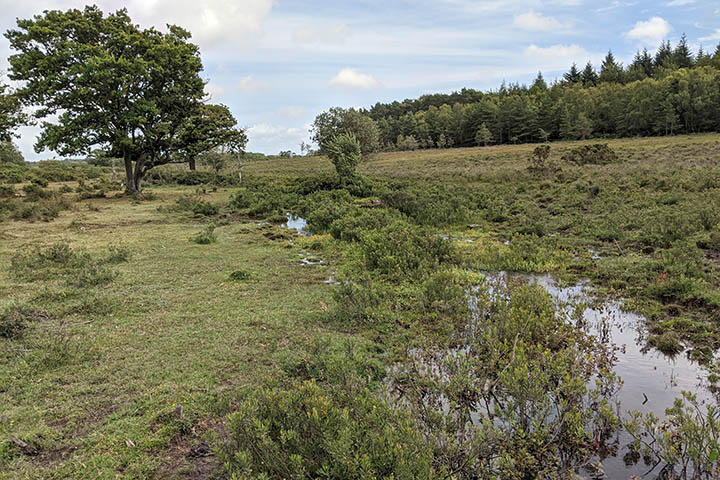
Recording
At least 473 well defined bryophyte taxa have been recorded to date in VC11, comprising 358 mosses, 112 liverworts and 3 hornworts (out of a Hampshire total of 499). Although certain hotspots in the New Forest have been relatively well covered, Hampshire as a whole has been rather poorly recorded in the past. A BBS national recording meeting was held in 1956, and the New Forest was also visited during the Dorset meetings held in 1930 and 1977. Much recording was also carried out by liverwort specialist Jean Paton, mostly during 1957 to 1960 when she was working at Southampton University. She subsequently produced the first bryophyte Flora of the vice-county in 1961. After a long gap Rod Stern undertook a more systematic survey between 2000 and 2008, assisted by Francis Rose and Howard Matcham. Stern published the results of this together with a facsimile copy of Paton’s Flora in the Atlas of the Bryophytes of South Hampshire (2010). The most recent bryophyte Flora of the whole county was published in the Flora of Hampshire (1996); written by Alan Crundwell (who was then VC12 Recorder) and Francis Rose.
Some more recent recording has been carried out in the New Forest by Alison Bolton, Neil Sanderson and latterly Graeme Smith; also through organised meetings of the Southern and Wessex recording groups. Des Callaghan carried out a survey of rare and threatened bryophytes in the New Forest in 2010 as part of a condition assessment of the SSSI. John Norton, the current VC11 Recorder, has mainly covered the south-eastern part of the vice-county in recent years, including the coastal areas around Gosport. Pete Flood recently carried out a study of the ecology of Sphaerocarpos species in the New Forest for his MSc project.
Hampshire distribution maps at 10km resolution have been compiled from the records available up to March 2016 (click to view); it is hoped that these will be brought up to date in the not too distant future. Unfortunately the maps only serve to illustrate the large gaps in recording effort and data compilation in the county. For VC11 the majority of records were input into the BBS database at only 5km or 10km square resolution, whilst a large body of data, including herbarium records, Francis Rose’s notebook records and many of the records from local meetings, have not been entered. A register of rare and notable bryophytes for Hampshire is in preparation.
Important sites and habitats
The New Forest
The New Forest SSSI covers nearly 30,000 ha and the National Park around 56,600 ha. It is a traditionally managed landscape and habitat complex consisting predominantly of wet heath, bog, acid grassland and various types of woodland. It also has significant areas of dry and damp calcareous grassland (especially where concrete has been removed from former second world war airfields) and some small areas of calcareous mire and fen. The variety of ancient semi-natural habitats combined with the long continuity of management makes it one of the richest bryophyte sites in lowland Britain. Many Hampshire species are only known from the New Forest, including outlying populations of several which are much commoner in the cooler and wetter north and west of the British Isles. A few have only ever been collected once and never refound.
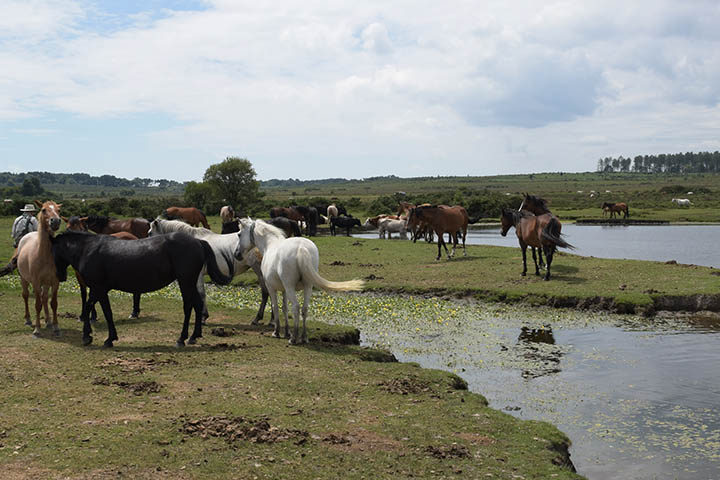
The New Forest has the largest British population of the moss Zygodon forsteri (Nationally Rare, GB Red List Endangered), an epiphyte on old Beech trees. It also has significant populations of several threatened and declining species, including Dicranum spurium (Nationally Scarce, GB Red List Vulnerable), Fossombronia foveolata (Nationally Scarce) and Hypnum imponens (Nationally Scarce), which all occur in wet heath. The largest populations of the declining liverwort Pallavicinia lyellii (Nationally Scarce) in VC11 occur in alder woods in the New Forest at Cadnam Common and Withycombe Shade on the Beaulieu River (a site discovered recently by Alison Bolton in 2020).


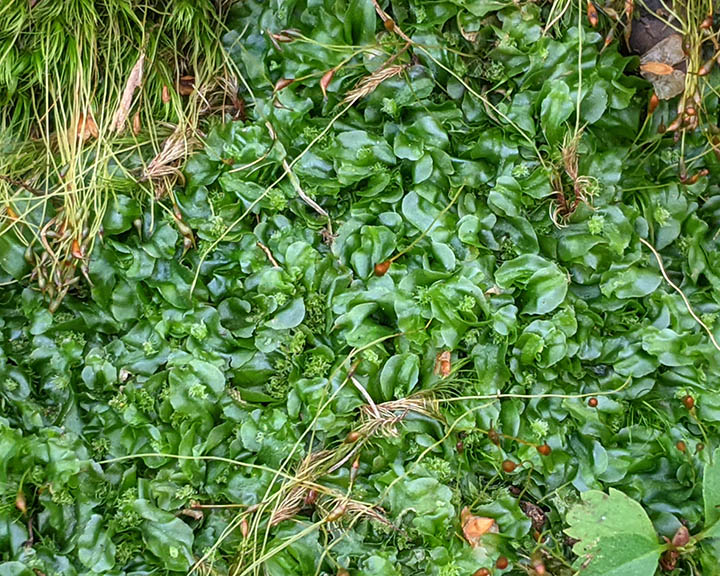


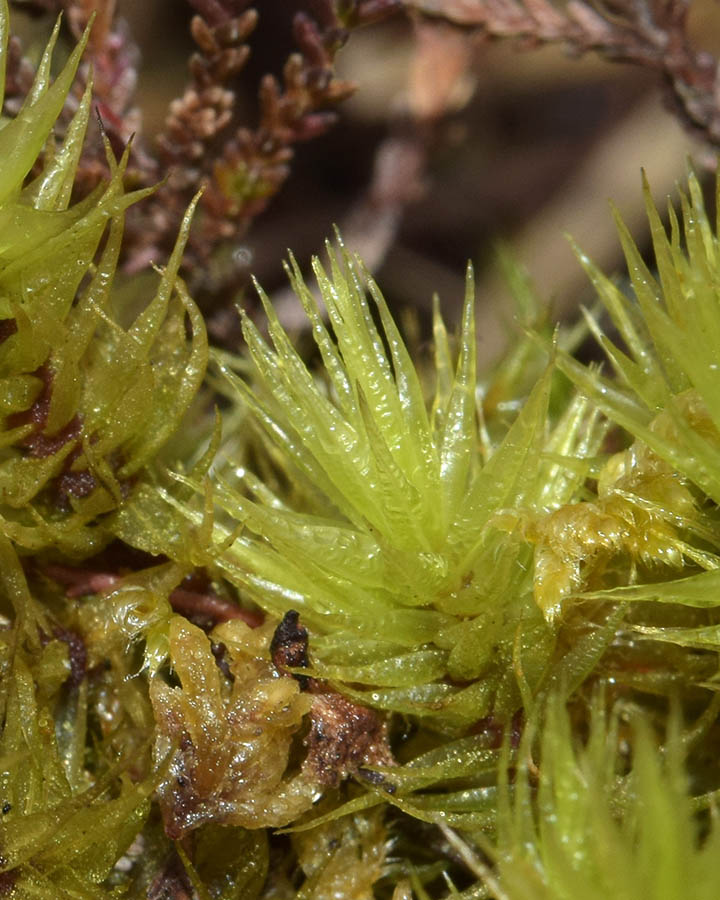
Other species of interest which have not been recorded elsewhere in the vice-county include Campyliadelphus elodes (Nationally Scarce; c.6 locations), Cephalozia macrostachya (Nationally Scarce, widespread in the bogs), C. pleniceps (Nationally Scarce; 1 record, 1956); Cladopodiella francisci (Nationally Scarce), Drepanocladus sendtneri (1 location, last seen 1960), Fossombronia maritima (Nationally Rare, one locality recorded in 1973 and 1977) and Hamatocaulis vernicosus (Nationally Scarce, 1 record in 1958).

The bogs and mires are relatively rich in Sphagnum species and liverworts, though most of these are relatively widespread in Britain as a whole. Sphagnum pulchrum, well known in the neighbouring county of Dorset, had never been seen in Hampshire until discovered in a small mire in the north of the New Forest in 2020 by Sharon Pilkington. The ‘Forest’ probably holds significant populations of several other species, including S. molle (widespread in wet heath), S. medium [S. magellanicum] (common in bogs), S. subsecundum, S. contortum and S. teres (these last three scattered in base-rich mires). Sphagnum angustifolium was relatively recently confirmed, but is probably at least occasional. Sphagnum capillifolium subsp. capillifolium is probably locally frequent in damp, acidic woodland.
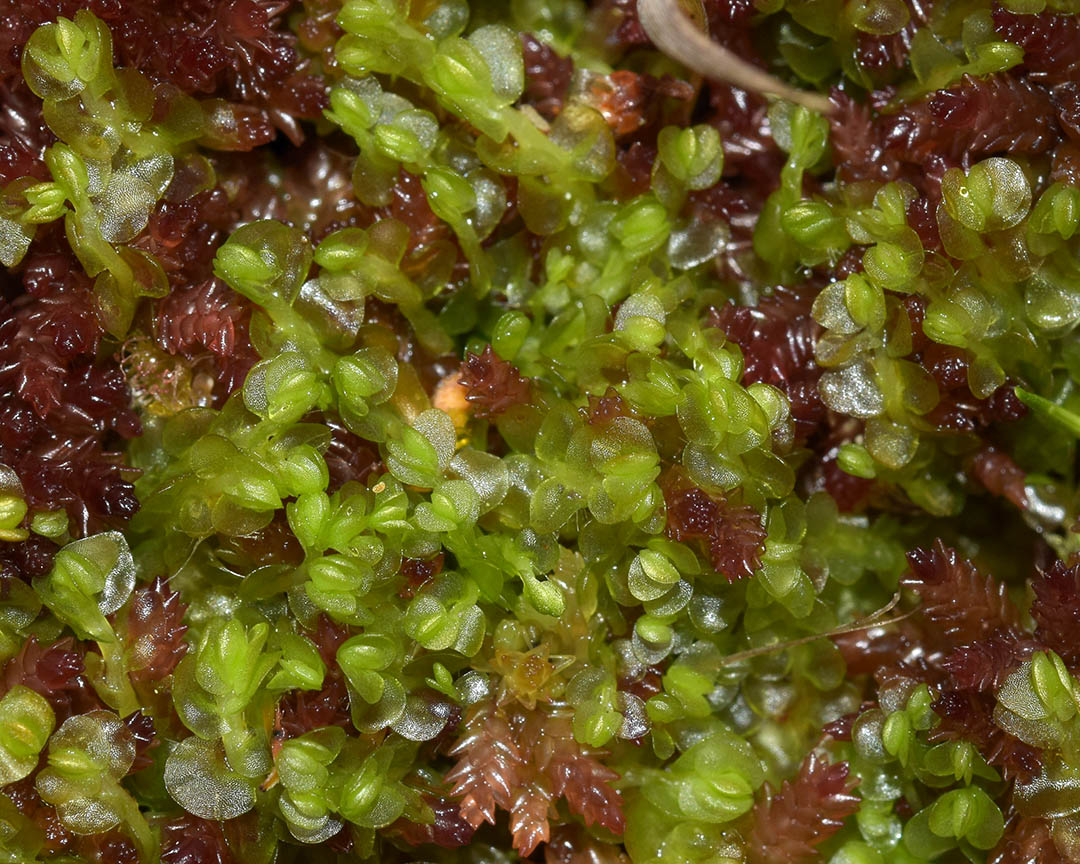

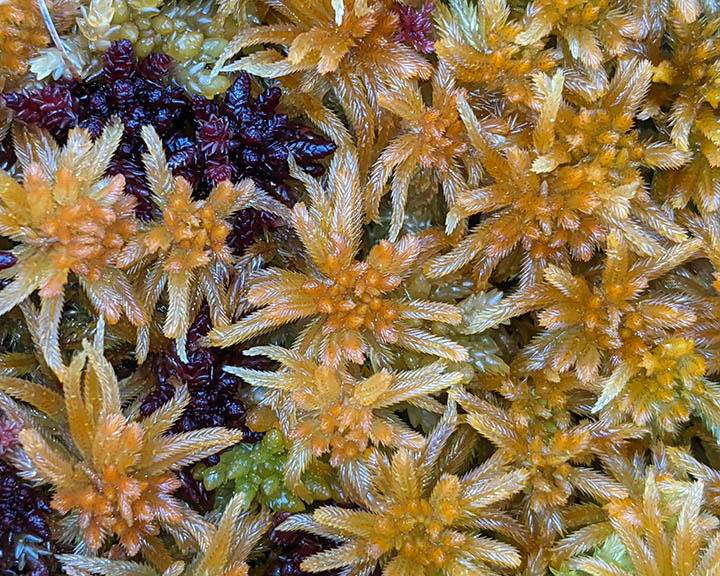
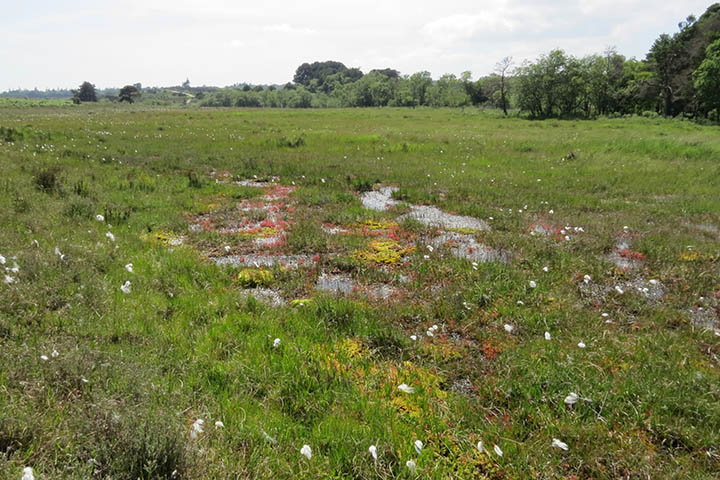



Having declined or become extinct in most of its former sites in lowland England, the dung-inhabiting moss Splachnum ampullaceum is still widespread and fairly common in the New Forest, growing mainly in wet heath along the sides of valley mires. Wet heath and bog habitat also supports scattered colonies of Racomitrium lanuginosum, but there have been very few recent records.


Other mainly northern and western species recorded only from the New Forest (or rarely elsewhere in Hampshire) but not nationally scarce or rare include Bartramia pomiformis (scattered, probably declining), Bazzania trilobata (2 locations), Breutelia chrysocoma (single records in 1898 and 1989), Fissidens osmundoides (1 record, 1973), Haplomitrium hookeri (a single 19th century record), Harpalejeunea molleri (3 records, last in 2008), Hyocomium armoricum (localised along streams); Philonotis calcarea (very local in calcareous mire), Plagiochila bifaria (1 locality, last recorded 1992), Plagiochila spinulosa (1 record, 1925), Polytrichum strictum (2 localities, 1968 and 1973), Porella cordaeana (2 records), Pseudocalliergon lycopodioides (1 record, 1958), Rhizomnium pseudopunctatum (possibly only 2 locations), Riccardia incurvata (very local), R. palmata (local but under-recorded), Saccogyna viticulosa (c.4 localities), Sanionia uncinata (2 locations, last record 1959), Scapania compacta (c.4 locations, last in 1987) and S. gracilis (c.3 locations, last record 1990). Some of these species may well be much more common than the records suggest, since the New Forest has by no means been thoroughly explored for bryophytes. One other lowland rarity has only ever been recorded from the New Forest in VC11; this is Lophozia capitata (Nationally Rare, GB Red List Vulnerable, S.41), which was recorded from one or possibly two locations in 1813-14.
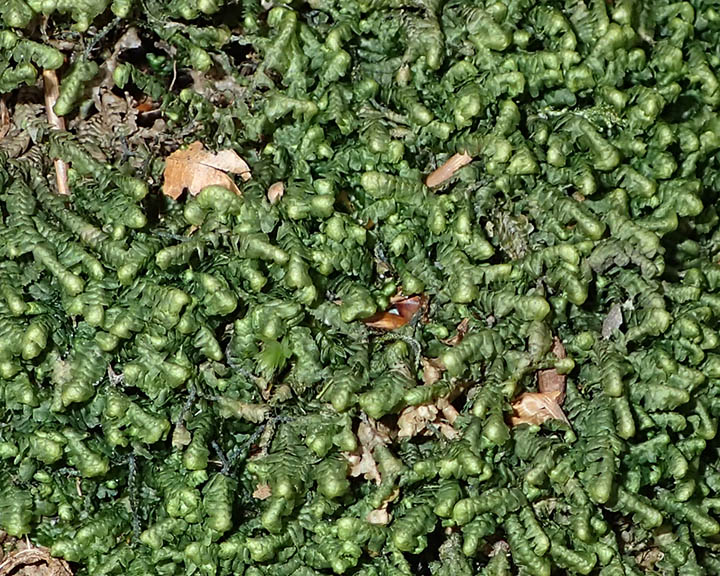
The New Forest also supports the best populations in the vice-county of some rarer woodland epiphytes, especially Frullania fragilifolia and Zygodon rupestris. The recently recognised Ulota intermedia has so far only been recorded from here. Another speciality is Pterogonium gracile which here occurs as an epiphyte on the bases of old beech trees, rather than in its typical rock habitat.

The damp to dry calcareous grassland, which occurs on old airfield sites, but also next to road verges, is noteworthy for its large populations of some of the commoner calcicoles, especially Campyliadelphus chrysophyllus, Ditrichum gracile, Fissidens adianthoides, F. dubius and Trichostomum crispulum. It is likely that the New Forest supports larger populations of most of these than occur on all the chalk grassland sites combined, where bryophytes of shorter turf are declining through lack of grazing. Climacium dendroides, a rare and declining species in the vice-county, also occurs in this habitat; a large population being discovered recently at Ocknell Plain by Graeme Smith. The New Forest is the main remaining stronghold of the calcicole liverwort Preissia quadrata in lowland Britain; it is recorded historically from about five or six localities, including two more recently, one of which is also the site of an old airfield.
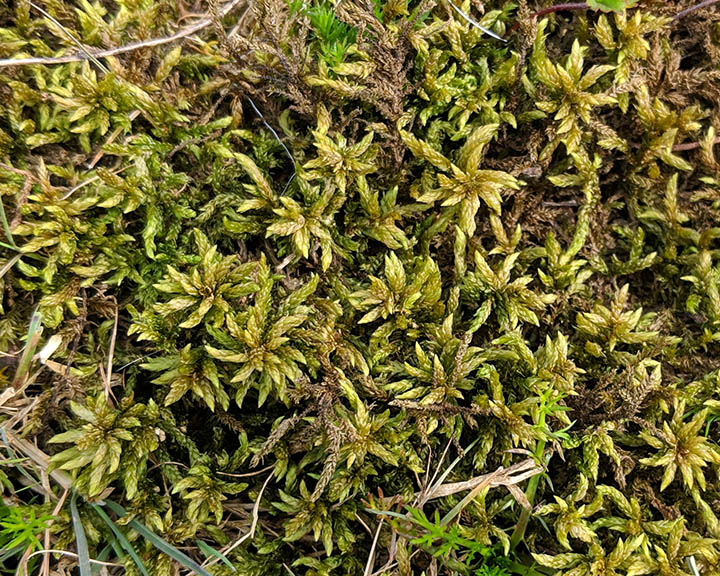
Campsites, gravel tracks, road verges and gravel bunds around the numerous car parks support a range of interesting species of short turf and open, disturbed ground. Calliergonella lindbergii and Brachythecium mildeanum are widespread and locally abundant in these habitats, especially on grassy road verges; other frequent species found mainly on the gravel tracks include Bryum alpinum, Scapania irrigua and Solenostoma gracillimum. Pohlia drummondii and Ephemerum serratum are also at least occasional in this habitat. Riccia and Sphaerocarpos species seem to be mainly associated with campsites (see ‘Recently increasing species’ below). An unusual, robust form of Bryum capillare is frequent in grassy areas on gravel, especially on or near to campsites, where it grows as clonal patches without producing sporophytes. Racomitrium elongatum is well established at a few locations, e.g. on grassy road verges and along paths in drier heathland.
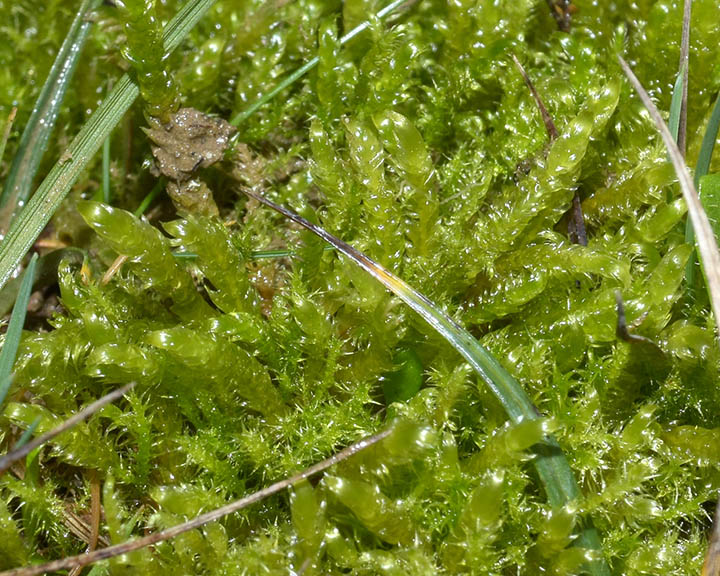


Wet woodland and watercourses
Although Hampshire is famed for its chalk streams, these and their and associated floodplain meadows and wet woodlands are mostly on inaccessible private land so their bryophyte interest is largely unknown. In VC11 several of the better-known sites with alder-dominated woodland are to be found along the New Forest streams. These support the majority of the known colonies of Pallavicinia lyellii (see above) and liverworts requiring humid conditions such as Lejeunea lamacerina and L. cavifolia, though the latter species is also known from a handful of other sites in the vice-county. The Hampshire & Isle of Wight Naturalist Trust’s Flexford Nature Reserve at Chandler’s Ford has a population of Trichocolea tomentella, which is very scarce in VC11. Also of interest in alderwoods in the vice-county are Hookeria lucens (scattered), Hygroamblystegium varium (rare but under-recorded) and Oxyrrhynchium speciosum (probably frequent). Aneura mirabilis (Nationally Scarce) has been recorded only once in 1982, by Rod Stern and Howard Matcham from a site in the west of the New Forest. It was searched for again recently without success.
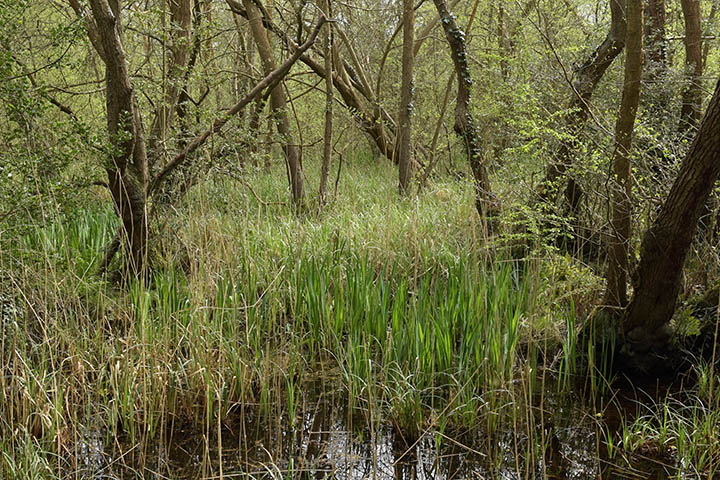
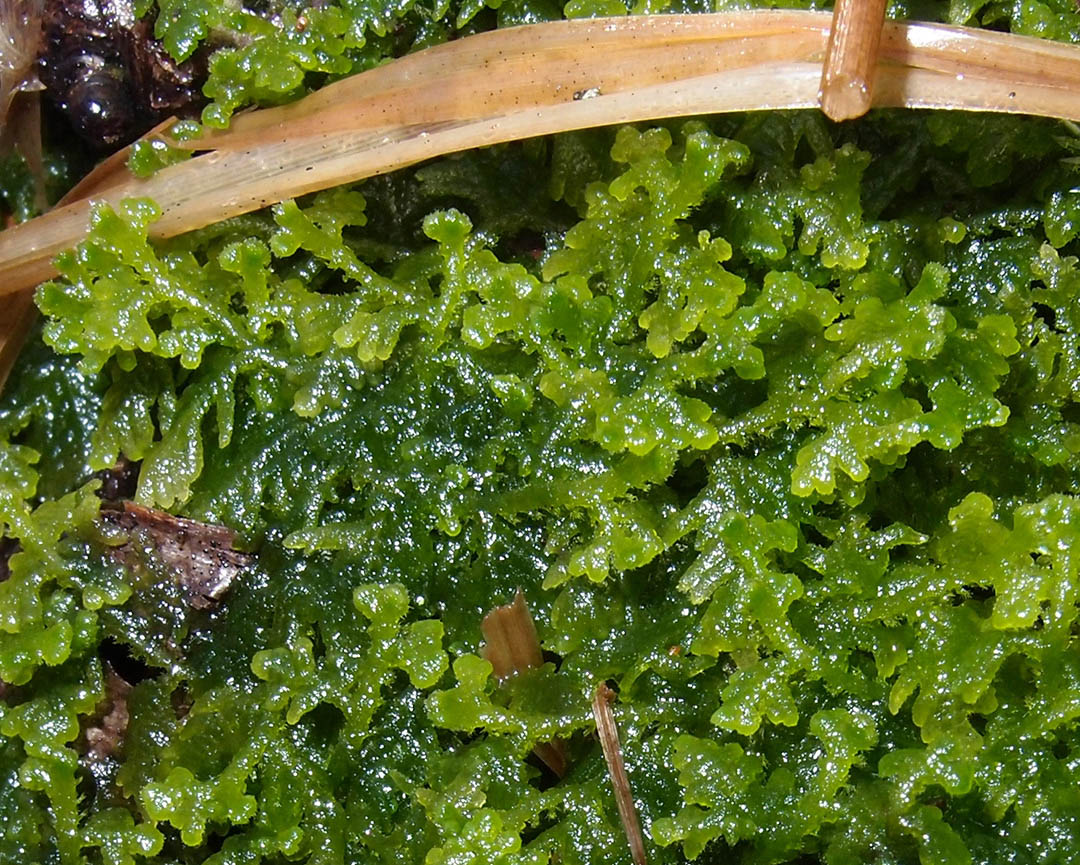
Rocky stream habitat does not occur in Hampshire, but on muddy banks and tree roots a number of common species may be found, including Homalia trichomanoides and Leskea polycarpa, though there are very few recent records of either of these. Epipterygium tozeri is widespread on drier banks, including those away from streams. On concrete and other stonework in the chalk streams Hygroamblystegium tenax appears to be frequent but Rhynchostegiella teneriffae rare. Fissidens crassipes is probably frequent, despite not many recent records. Hygroamblystegium humile has only been recorded once since 1960 on the River Itchen in Winchester. Hygrohypnum luridum is rare in the vice-county, with the last record in 2003 in a churchyard away from water. There is only a single record of Mnium stellare from a wood near Petersfield, in 1985.
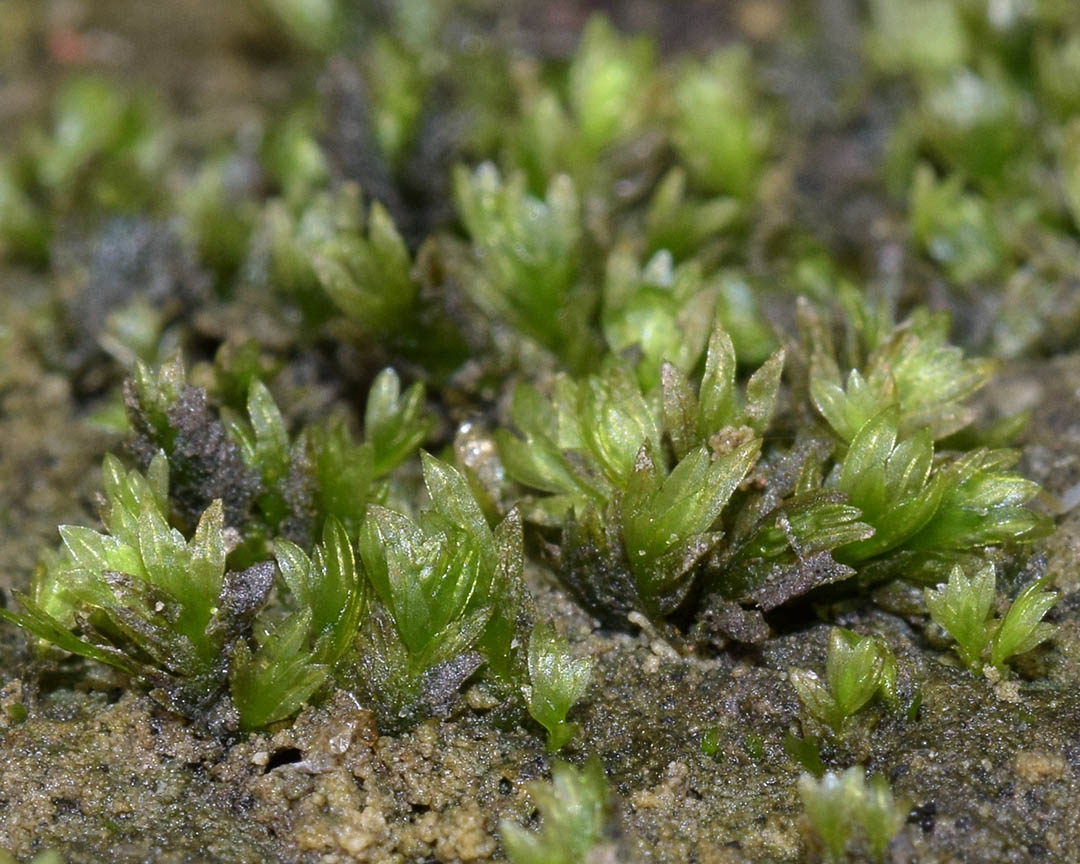
Marshes and ponds
The liverwort Riccia cavernosa is known from only three sites historically and recently from two sites within the Avon Valley in the west of the vice-county, including a large and thriving population on poached mud and a pond margin at Breamore Marsh. Aphanorrhegma patens appears to be widespread in this type of habitat (although only recorded on a few occasions historically), with recent records from Breamore, Titchfield Haven, Bishop’s Waltham and Paulsgrove.
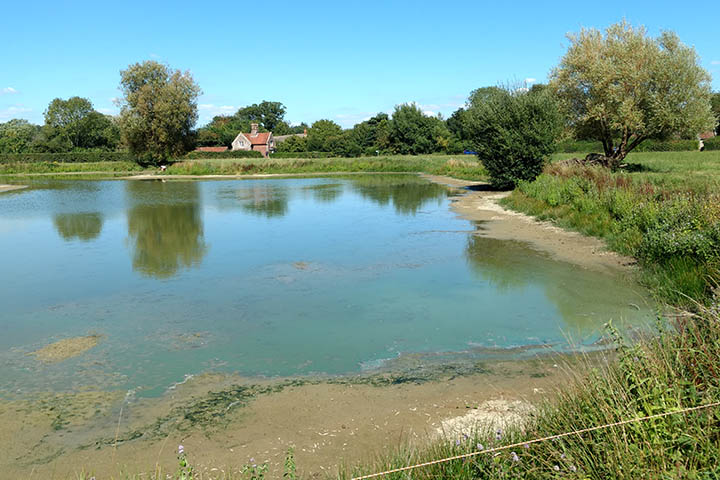
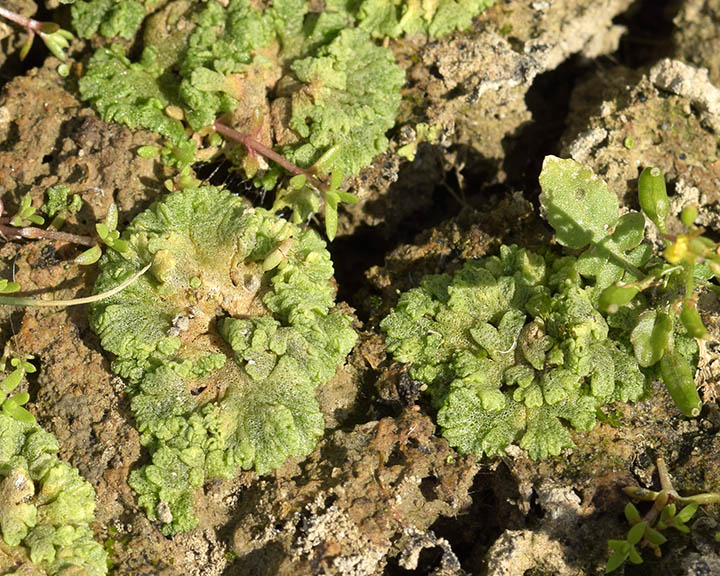
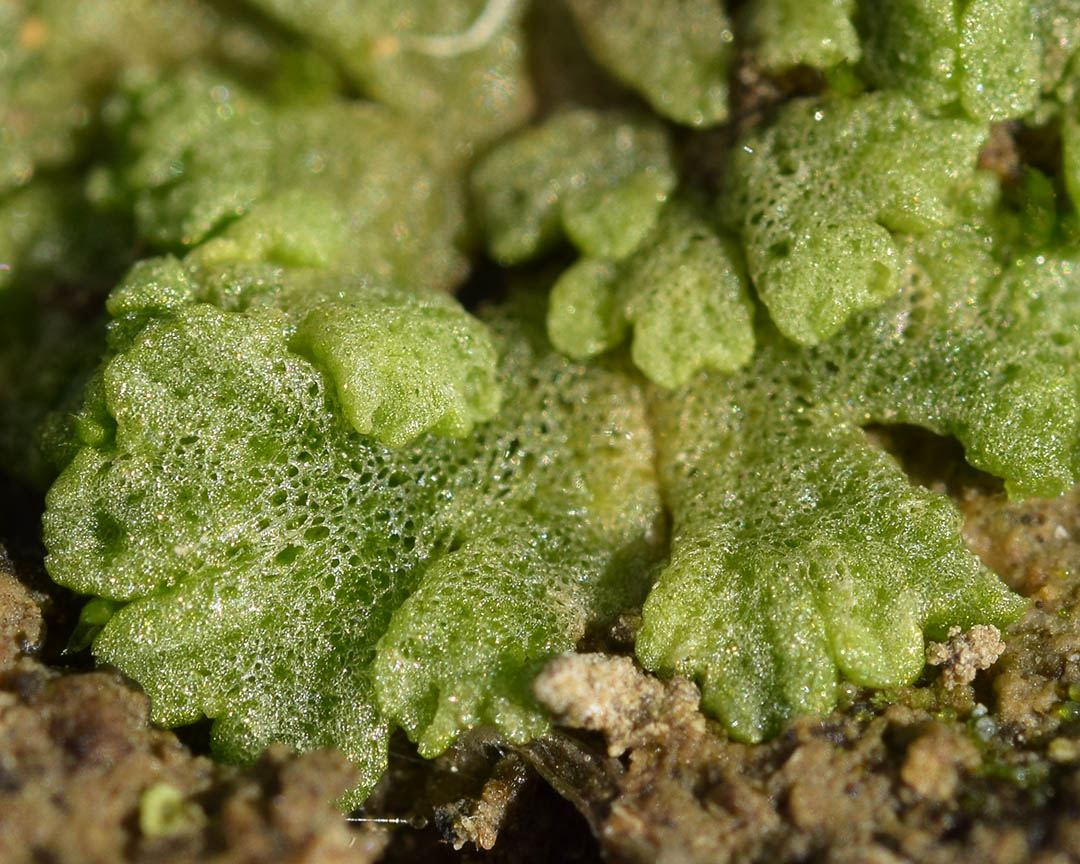
Other woodland and heathland
Outside of the New Forest, other main woodland sites of importance for bryophytes include Crab Wood west of Winchester, the Botley Wood complex north of Fareham, West Walk at Wickham, Creech Woods at Denmead and Havant Thicket north of Havant. These all contains mixtures of semi-natural ancient coppice woodland and more recent coniferous plantations. Noteworthy species recorded from these or other sites include Herzogiella seligeri (Nationally Scarce), Atrichum tenellum (Nationally Scarce; a single record from Creech Woods in 1986), Rhytidiadelphus loreus (common in the New Forest but local in other woods) and Scapania nemorea (local with very few recent records). Additional species of interest in woodland on the chalk are mentioned below.
Chalk and limestone
Important sites for calcareous bryophytes in VC11 include St Catherine’s Hill at Winchester, Old Winchester Hill and Beacon Hill near West Meon, Butser Hill (all lying on the South Downs), plus Broughton Down in the north-west of the vice-county and Portsdown Hill in the south-east (a chalk escarpment lying between Fareham and Havant). These support at least three quite different chalk communities, including one on warm, dry, exposed substrates with Abietinella abietina (Nationally Scarce), Entodon concinnus, Fissidens dubius and Weissia spp., and another on cooler, damper, often north-facing grassland, nicknamed the ‘southern hepatic mat’ by Francis Rose, notable for the calcicole liverwort Scapania aspera. This community mainly occurs at Butser Hill, though is probably declining there. Noteworthy Weissia species on chalk include W. condensa and W. sterilis; both Near Threatened on the GB Red List and apparently rare in VC11. Weissia controversa var. crispata appears to be common in the dry chalk community and the similarity to W. condensa puts into doubt some of the past records of that species.
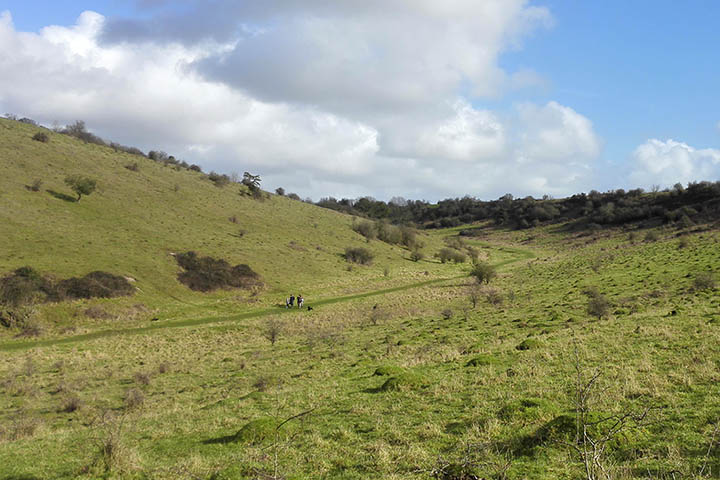


The drier chalk community is well developed at Portsdown Hill where other recent finds include the first confirmed VC11 records for Microbryum starckeanum (Nationally Scarce), Encalypta vulgaris and Didymodon acutus (the ‘true’ species, distinct from D. icmadophilus, and possibly nationally rare). Abietinella abietina is scattered but locally frequent here, but Entodon concinnus does not occur. Pottiopsis cespitosa (Nationally Scarce) was found in 2017; there being only two other historical records for the vice-county. Pleurochaete squarrosa (Nationally Scarce) has been recorded in several places at the site; the only other recent record being from Butser Hill. There is also a single historical record of Aloina rigida (Nationally Scarce).
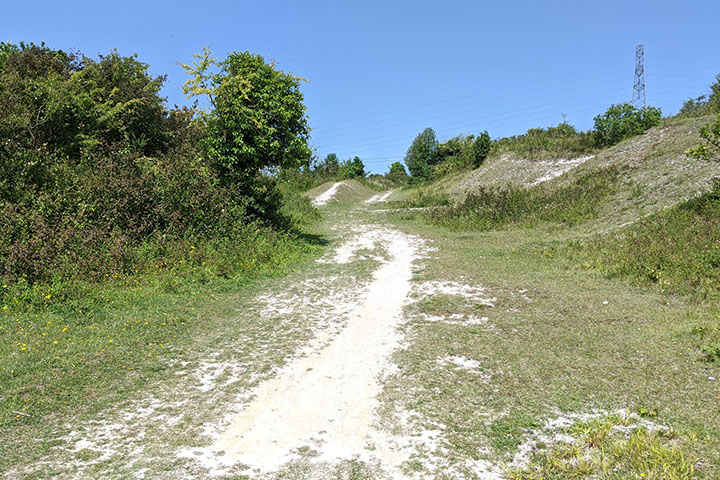
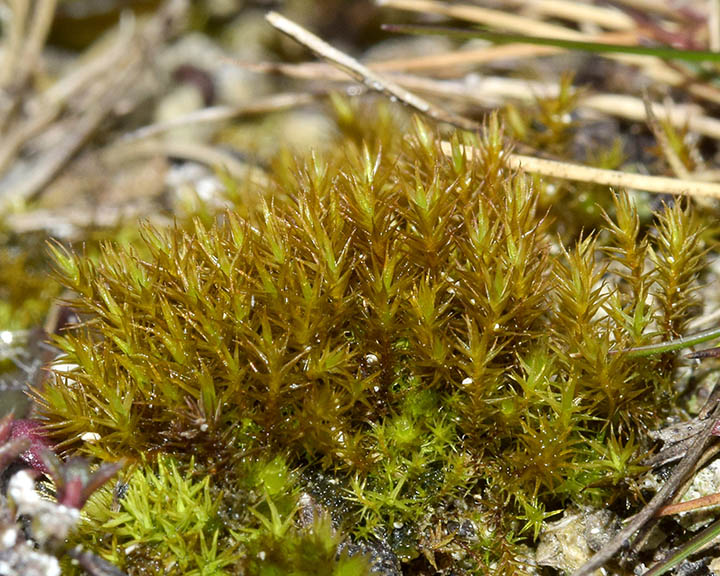

Other noteworthy species recorded at chalk grassland sites include Seligeria recurvata (1 record on flint in scrubby woodland at Butser Hill, 1984) and Thuidium assimile (c. 4 sites, not since 1984). Tortula lanceola is undergoing a rapid decline nationally, and has not been recorded in the vice-county since 1966, though prior to that is listed for another nine 10km squares. Oxenbourne Down, within the Butser Hill area, has old records for Porella arboris-vitae and Rhodobryum roseum. Both probably still occur, though have not be seen during searches in recent years. Some of the above mentioned sites and several other downland peaks in the vice-county have been under-managed in recent years, resulting in large swathes of rough grassland and scrub and consequently a likely decline in their bryophyte interest.
Disused chalk quarries, churchyards, railway bridges and old limestone abbeys and castles provide further niches for calcareous species, including the liverwort Cephaloziella baumgartneri (Nationally Rare, GB Red List Endangered), discovered in 2013 at Netley Abbey, just east of Southampton. Tortella tortuosa was also found at the same time; it a rather rare species in the vice-county with recent records only from Butser Hill. Gymnostomum viridulum has been recorded here in the past (the only vice-county record), but could not be refound during recent searches. Also at this site are good populations of Pseudocrossidium revolutum and Scorpiurium circinatum, both scarce in the vice-county. The first record of the liverwort Leiocolea badensis in VC11 was from a disused chalk quarry near Kings Somborne in 2017. Although very common on the Isle of Wight Scorpiurium circinatum was historically recorded from only four other VC11 sites, but has been found at a further four sites in the last 10 years or so, so may be increasing. It is interesting to note that churchyards and buildings are amongst the least well recorded habitats in the vice-county over the last 60 years. This is exemplified by records of Gyroweisia tenuis, which was documented as occurring in virtually every 10km square in the vice-county up to the 1950s by Jean Paton, but has been recorded recently only once, at Beaulieu Church in 2018.

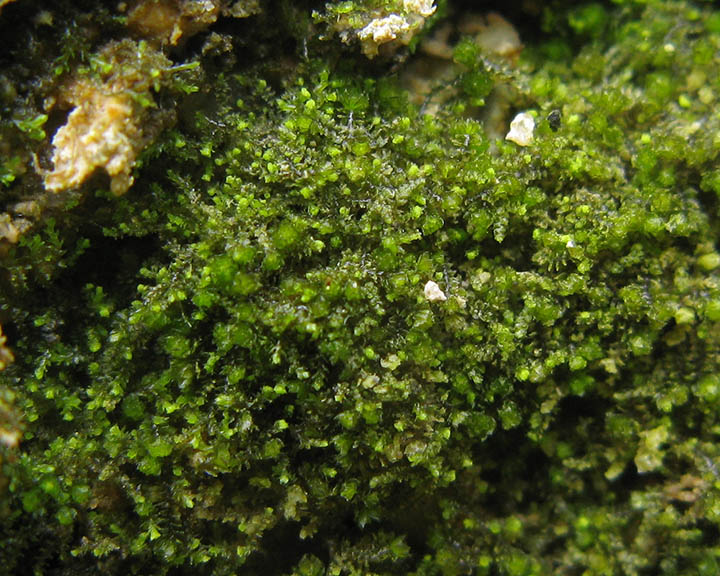



Chalk and limestone species which occur in more shaded microhabitats, especially calcareous woodland, are better represented on the chalk hangers of east Hampshire, which mainly fall within VC12. One species of interest is Campylophyllum calcareum (Nationally Scarce), recorded from three named localities in VC11, but not since 1959. Rhynchostegiella litorea (Nationally Scarce, GB Red List Near Threatened) grows as an epiphyte on tree bases, but also occasionally on stone; it is very scarce in the vice-county with about five records since 2000. Tortella inflexa (Nationally Scarce), a species of shaded chalk stones, is recorded from several of the main sites along the South Downs.
The coast
Although the Hampshire coastline is dominated by saltmarshes around the estuaries, there are a few coastal species of importance which occur on coastal cliffs and banks. In 2020 a population of the declining, GB Red List Vulnerable and S41 moss Tortula wilsonii was discovered on a scrubby bank by a saline lagoon in Gosport. The only other Hampshire record was from the coast east of Lymington in 1974 and there are old historical records from Sussex and Kent. The only record of the Nationally Rare and GB Red List Endangered Tortula cuneifolia in the county was from nearby Lee-on-the-Solent in 1956. This has been searched for more recently without success, but Microbryum starckeanum (Nationally Scarce) was found during one visit. Acaulon muticum is occasional around the coast between Lee-on-the-Solent and Gosport, though some populations may be referable to A. mediterraneum.
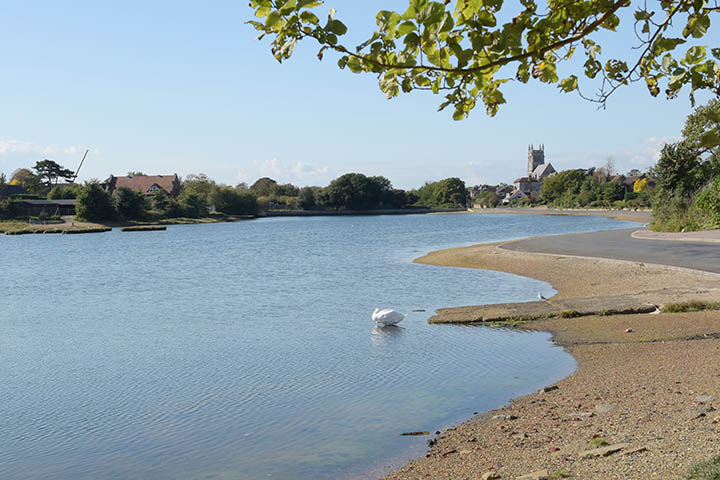

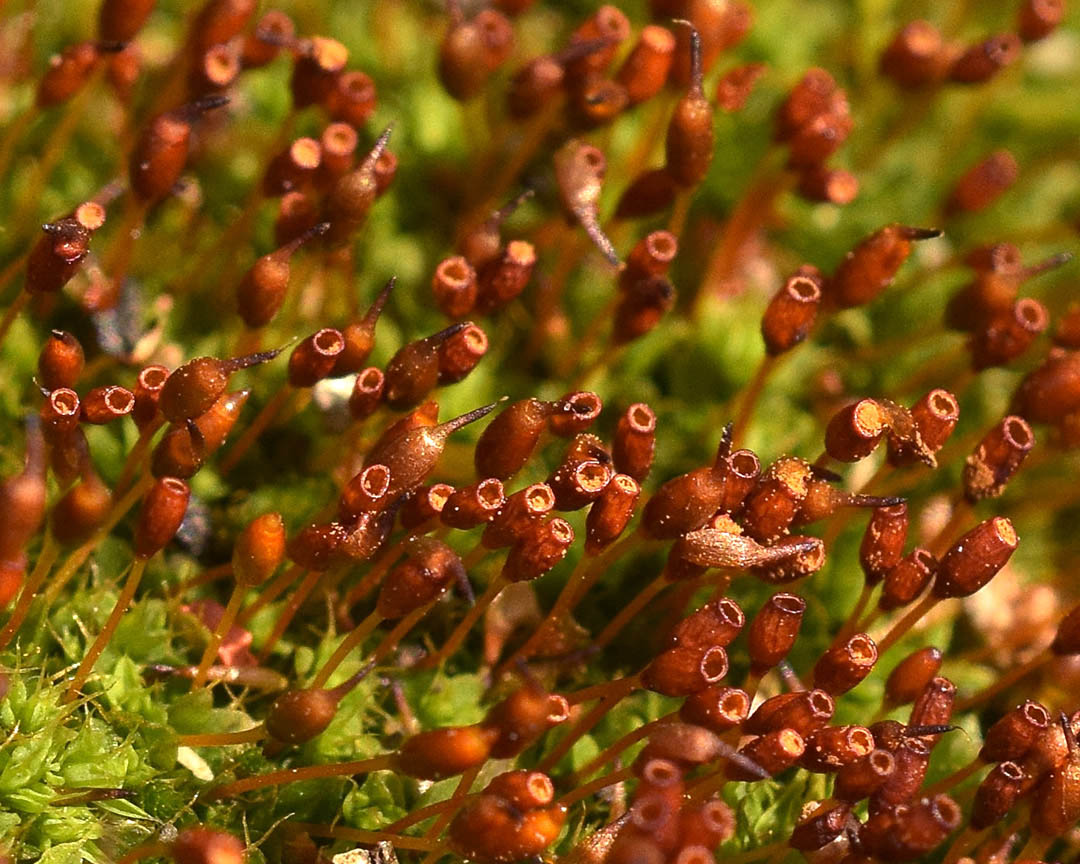
Coastal soft cliffs between Chilling and Brownwich, to the east of Southampton Water, support spectacular displays of the ephemeral moss Bryum gemmiferum in wet winters. It is only known from one other site in the vice-county. Tortula viridifolia, another coastal species, has been recorded from about seven localities historically in VC11, the most recent being at Hythe, on the west side of Southampton Water, in 2004. The introduced liverwort Telaranea murphyae (Nationally Rare, GB Red List Vulnerable) was found by Rod Stern on cliffs at Bournemouth, at the far western end of the VC11 coast, in 2002.
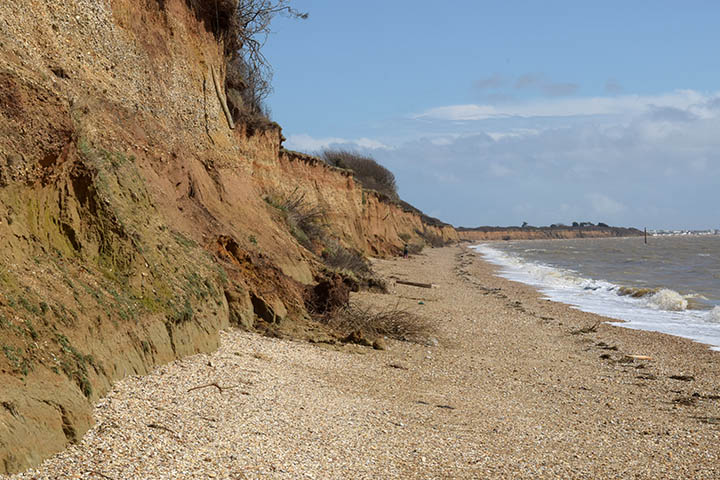

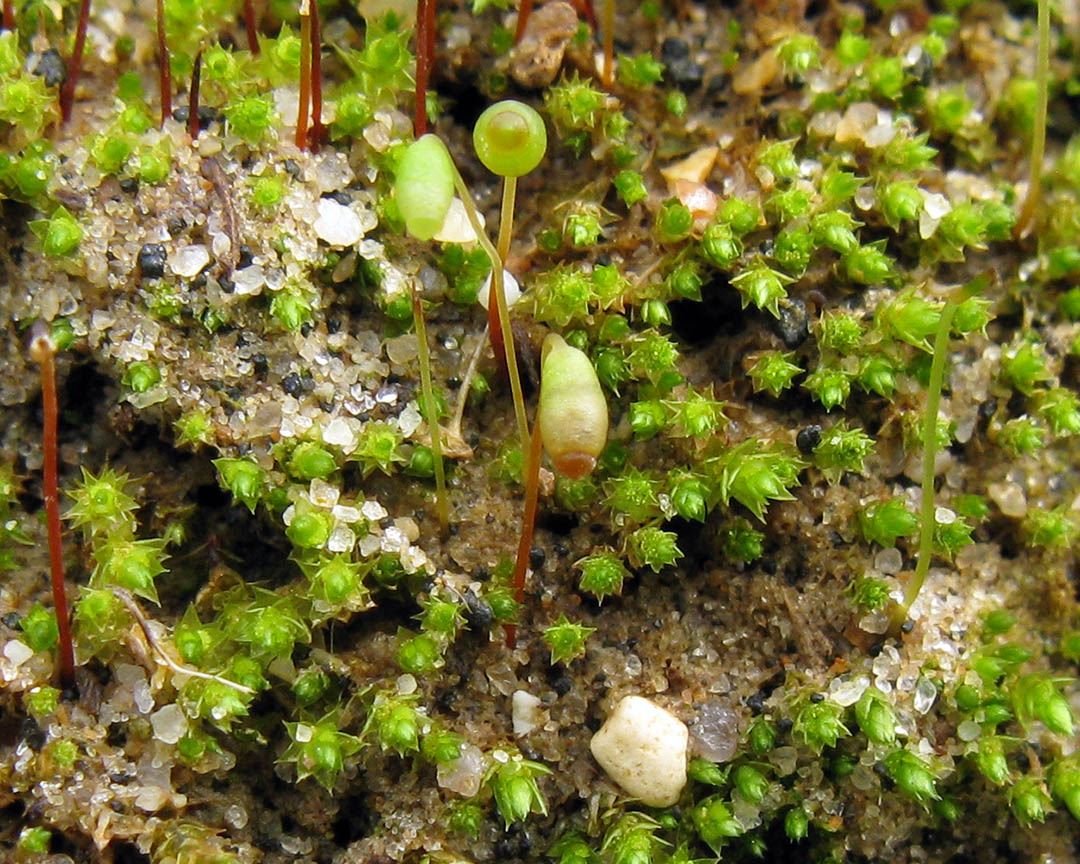
Scleropodium touretii is widespread but very local around the Hampshire coast, though some records probably refer to the much increased S. cespitans, which even carpets shingle beaches in places. Also mostly associated with the coast is Rhynchostegium megapolitanum, which is under-recorded, but widespread in Gosport and locally abundant on Sandy Point, Hayling Island (one of the few areas of coastal sand in the vice-county).

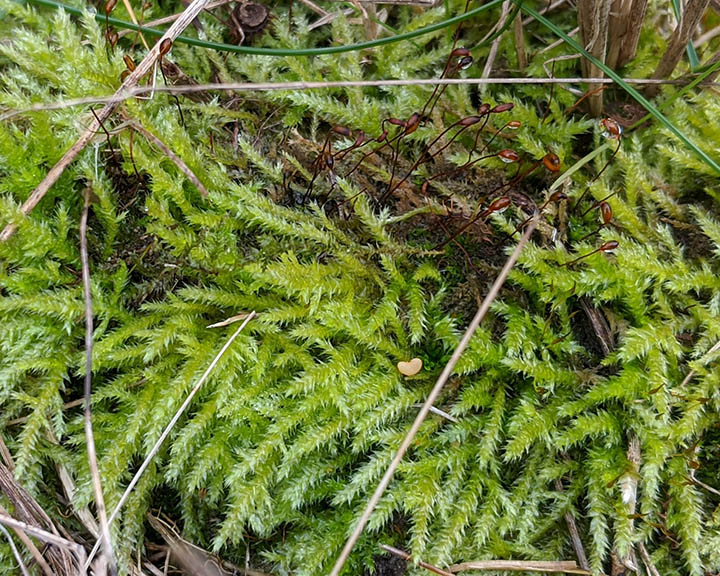
Species able to withstand more strongly saline conditions include Hennediella heimii, Phascum cuspidatum var. piliferum, Tortella flavovirens and Tortula modica. These are all occasional to locally frequent in the Portsmouth Harbour area and probably elsewhere around the coast. Phascum cuspidatum var. papillosum was recorded at the same location as Tortula wilsonii in Gosport, and like that species may have Mediterranean affinities.
Other rarities and noteworthy species
A few further miscellaneous species have been recorded historically in VC11, but not recently. Tortula schimperi (Nationally Scarce, GB Red List Data Deficient) is a recent taxonomic split from T. subulata, and was identified from a collection by Jean Paton in 1958 near Winchester. T. subulata is itself rare in the vice-county, with no records since 1962. The only record of Thatch Moss Leptodontium gemmascens (Nationally Scarce, GB Red List Near Threatened) was from Romsey in 1917. Bryum creberrimum (Nationally Rare, GB Red List Near Threatened) was recorded from two localities by Jean Paton in the late 1950s, but not since. The only record of Nardia geoscyphus (Nationally Scarce) was also by Jean Paton from Bransgore in the far south-west corner of the New Forest in 1960.
Recently increasing species
Recent discoveries in VC11 include communities of Mediterranean liverworts on campsites in the New Forest, with Riccia crystallina (Nationally Rare) and both Sphaerocarpos michelii and S. texanus (Nationally Scarce) joining the more common Riccia sorocarpa. These may all be increasing in southern Britain now due to climate warming (one reason may be the greater availability of bare soil in winter, caused by summer parching). The ephemeral moss Bryum gemmilucens (Nationally Rare, GB Red List Near Threatened) was also found recently on the edges of one of the disused airfields within a campsite at Ocknell Plain. Another increasing species on damp grassland in the New Forest is the presumed alien Lophocolea bispinosa (Nationally Scarce).

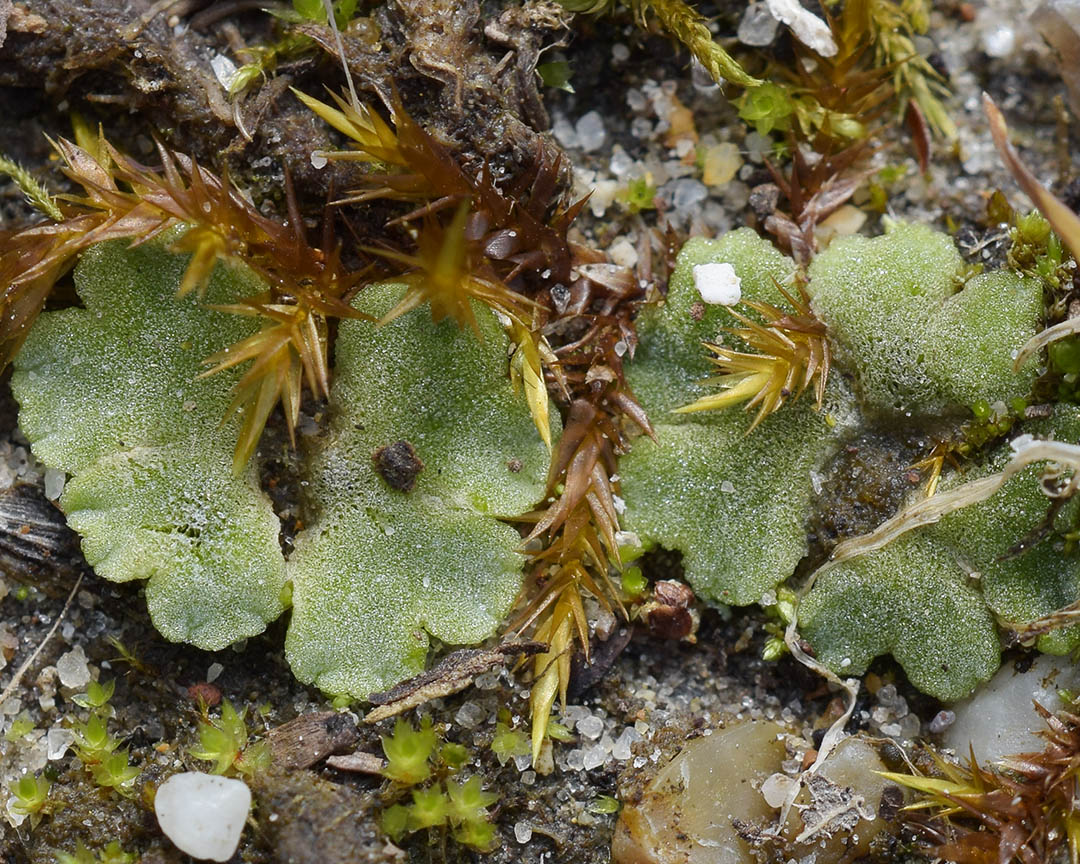
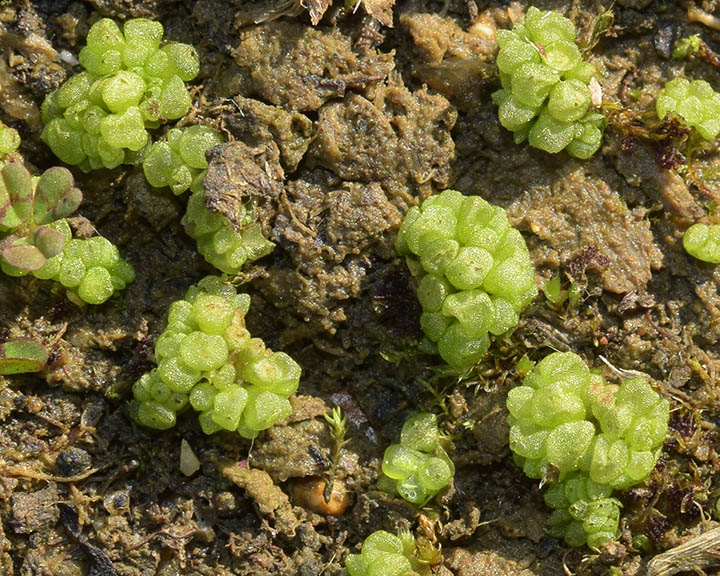

The ephemeral moss Acaulon mediterraneum (Nationally Rare, GB Red List Vulnerable) was collected and later confirmed from a cemetery in Fareham in 2019. This taxon may have been overlooked or be on the increase in southern Britain and has also recently been recorded in West Wales. Other rare bryophytes with Mediterranean tendencies are believed to be on the increase in VC11, including Dialytrichia saxicola, recorded from three sites in the last few years and Sematophyllum substrumulosum recorded from woodland sites in both VC11 and VC12. Hennediella macrophylla has to date only been recorded from two sites (at Burley in the New Forest and Warblington near Emsworth), but is increasing in other parts of southern Britain.

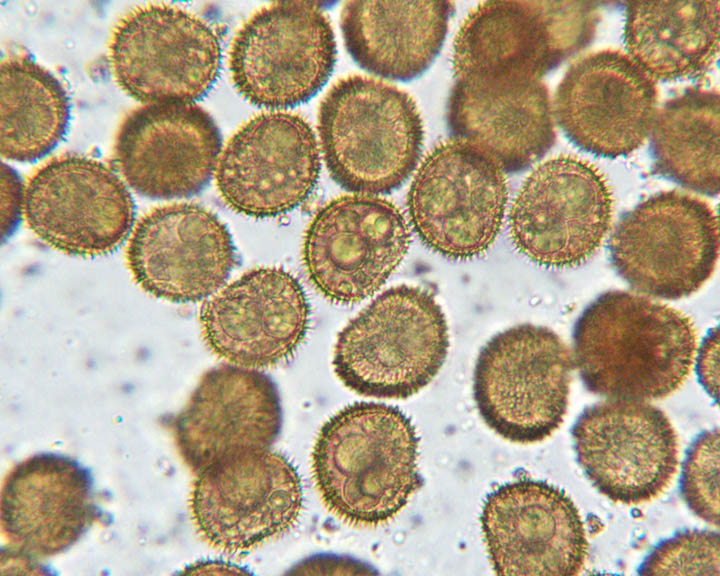
Now a widespread phenomenon, a number of species have spread from silt-encrusted tree roots along waterways to nutrient-enriched roadside trees and tarmac. Recording of these has been patchy in VC11, but Scleropodium cespitans and Syntrichia papillosa are now widespread and abundant, and S. latifolia is probably frequent. Syntrichia virescens has only been recorded from two locations to date, but must also be increasing. Dialytrichia mucronata is still rare in the vice-county on tarmac and concrete, but may increase in the future. One of the Dialytrichia saxicola sites mentioned above was also on tarmac.


On rotting logs and stumps Nowellia curvifolia is increasing, though is presently very sparsely recorded, along with the alien Lophocolea semiteres, which is also turning up on bare, sandy soil. Sematophyllum substrumulosum has not been widely looked for so far and is recorded from only a single location, at Creech Woods, but is likely to become more frequently recorded in the future.
